How to win the RBC Case Competition? Bravery, teamwork & $19,086
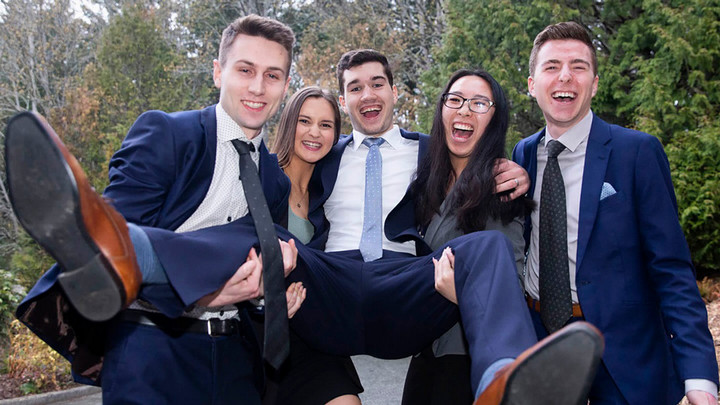
Gustavson followed team 58 throughout the 2019 RBC Case Competition finals to get a behind-the-scenes look at what it takes to succeed in this competition. Their effective teamwork and problem-solving tactics resolved their financial statement panic and ultimately secured them first place!
By Mackenzie Ford, Gustavson External Relations co-op student, 2019
3:00 p.m.

It’s 3:00pm on the day of Gustavson’s RBC Case Competition Finals 2019. It’s Monday afternoon, after a long day of class, and it’s raining. While many students would retreat to their homes for an evening of homework (or Netflix), team 58 (Mitchell Basher, Joanne Ho, Josiah Nadon, Anika Neil, Peter Palka) — or as they like to call themselves, “Fifty Great”— don heels and suits and gather to participate in the last stage of the case competition. The participants look like they are wondering how they could possibly create a comprehensive business plan worthy of winning the entire RBC Case Competition within three hours, but their spirits are still high. They’ve made it this far…only three hours to go.
3:30 p.m.
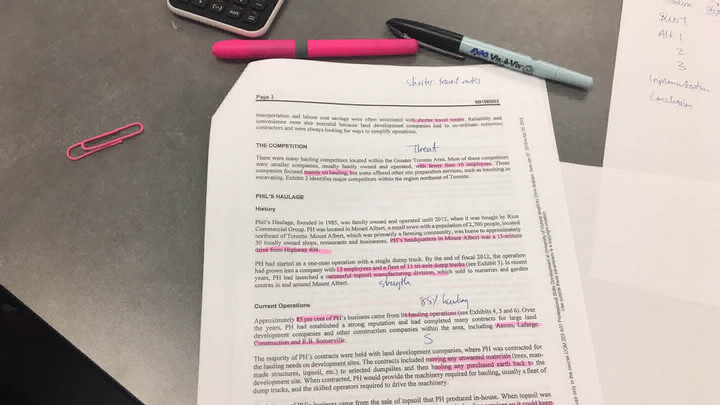
The students are assigned the case. Nobody really knows what to do, but if they are like me and university has taught us anything, it is that reading the case and highlighting every second sentence will at least make us feel somewhat prepared.
4:00 p.m.
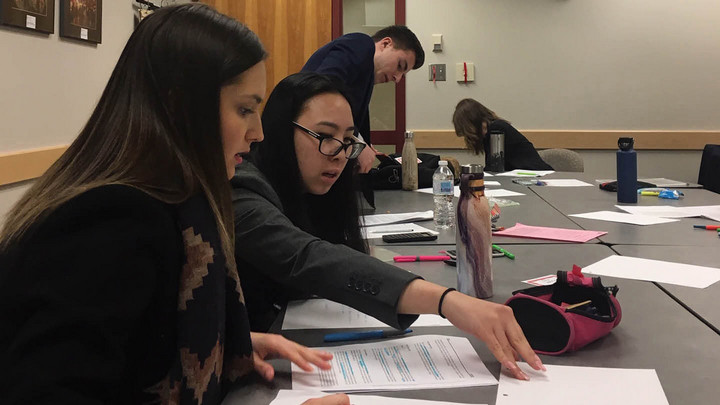
There are countless directions a case study can be taken, and there are so many different variables to consider. The team decides to split up. Two take charge of the financial analysis, attempting to create a balance sheet, and two different contribution margins, including a best and worst case scenario. Two others begin the SWOT analysis, listing the strengths, weaknesses, opportunities and threats for the expansion. The fifth team member works on the presentation, jumping between sub-groups and devising a catchy hook to grab the judges’ attention. At this point, the students seem extremely grateful to be on a team; each person brings different lived experience and strengths to the analysis of the case.
4:30 p.m.
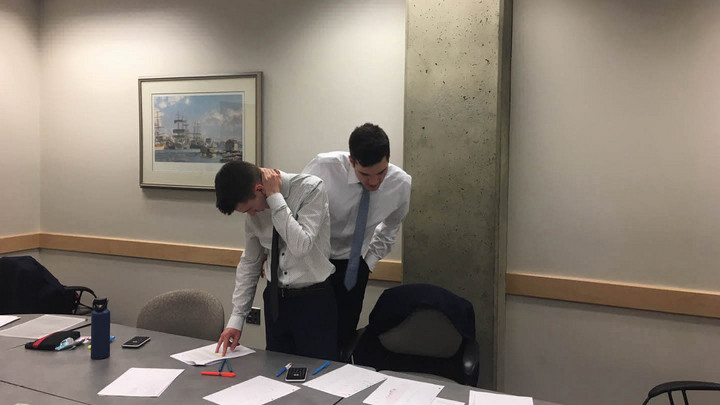
After another read, they decide that it is best to discuss the financial details of the case aloud. This proves to be the hardest part for team Fifty Great. “Do we count this as an overtime cost? Is it a mixed or fixed cost? Where was $19,086 allocated?” they ask one another. Communication is critical here, and everyone must be listened to before a concrete solution can be devised.
5:30 p.m.
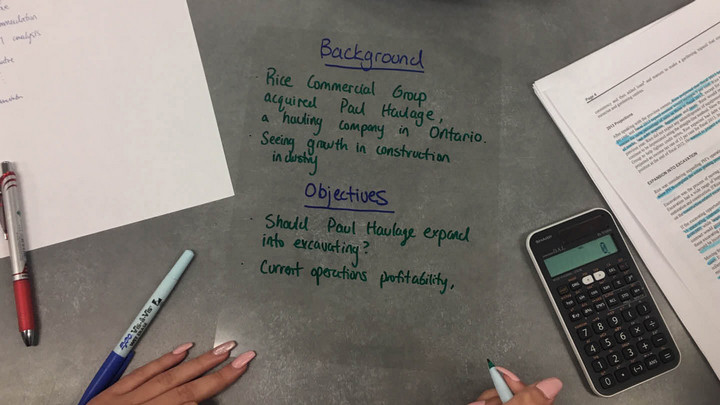
On the other side of the table (across from the number crunching), the SWOT analysis is solidified, which means that it is time to move on to presenting the facts. The students probably think that things are looking good and that they could make a pretty killer PowerPoint presentation to present their plan. Then they remember that they must present the case on an overhead projector like in grade school. Suddenly the team member with the best handwriting becomes a very valuable player.
5:45 p.m.
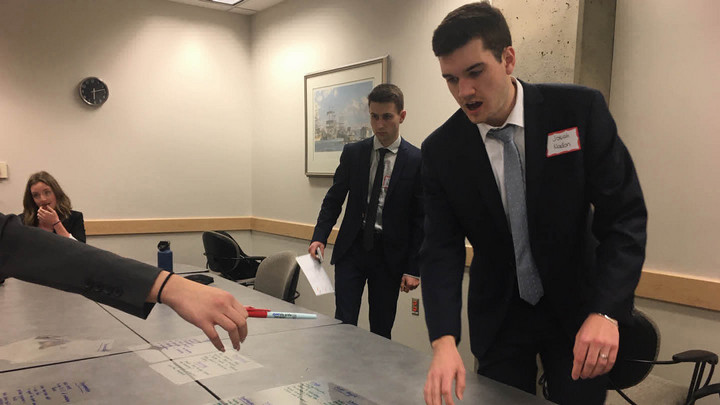
Somehow the students have managed to scribble almost all of their ideas onto the overhead projector sheets. Everything is looking pretty good, but the tension and nerves start to intensify as they re-visit the financial analysis. One major question still stumps them: “I’m looking at the statements and I still can’t seem to find out where the $19,086 went,” someone repeats anxiously. “They’re going to ask us about that—we need to have an answer.”
6:00 p.m.
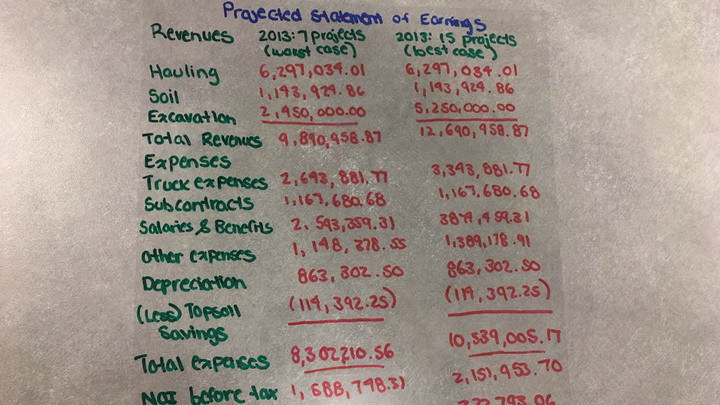
“WE ONLY HAVE TWENTY MINUTES LEFT!” someone says. “It’s ok, I think I can speak about the missing cash. I think I’ve figured it out,” another team member replies. That seems to settle the team’s nerves. Each member chooses a few slides to present. With a couple adjustments to the overhead slides and additional lines added to their mental scripts, they think that their solution is finally clear.
6:10 p.m.
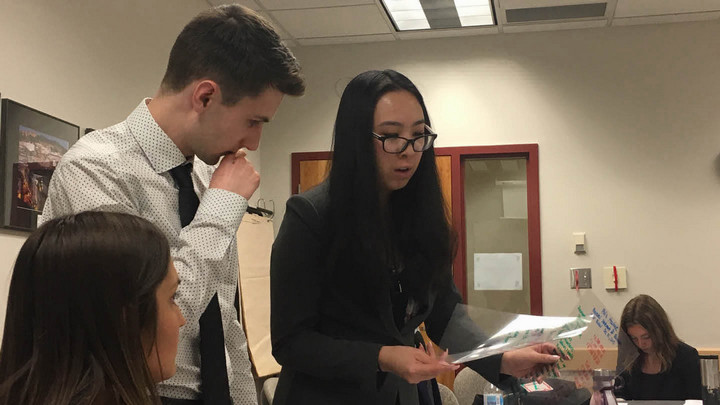
During the final minutes, each individual takes a turn muttering their speech aloud. Although this is a group analysis, each member has their own presentation style which can be a blessing and a curse. Together, they hope that they can combine their strengths to muster a holistic analysis. Everyone is nervous; suits can get very sweaty. Some people probably even do a silent prayer to themselves (don’t forget your lines)…
It’s show time.
6:30 p.m.
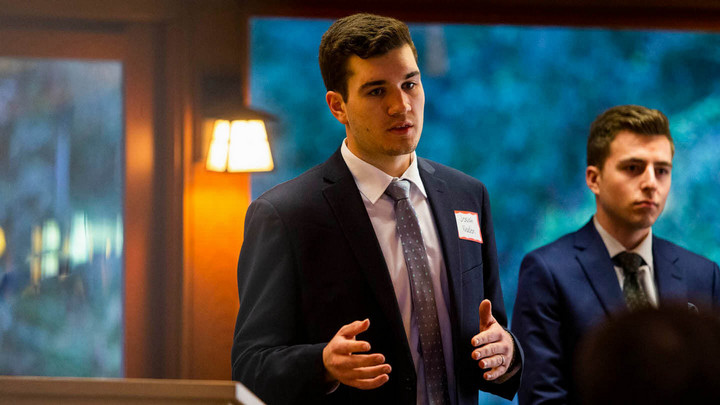
The group enters and suddenly an air of composure transcends (if only on the outside) for the first time in hours. Each member recites their portion of the case analysis in a calm and confident manner and the judges listen intently, taking in the details of the financial statements, expansion strategy and overall group presentation.
6:45 p.m.
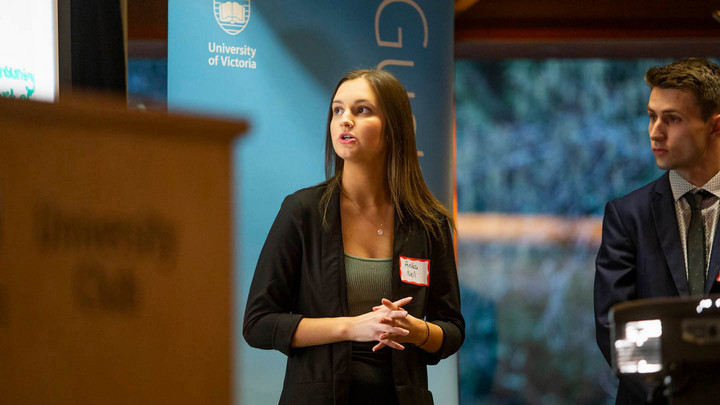
It’s now time for feedback. The judges ask questions including: “how does this add to the overall competitiveness of the company?” “Do you think your estimate could in fact be too low?” The students answer with conviction. The judges and the audience are thoroughly impressed, and the bar has been set extremely high. Everyone knows it will be difficult to pick a winner out of all of the incredible presentations.
7:25 p.m.
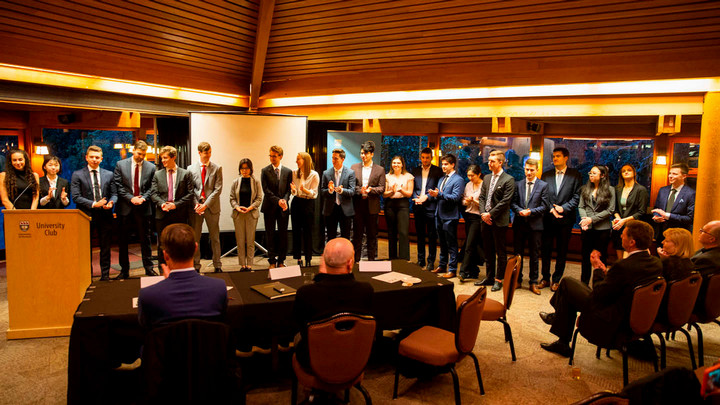
All of the students gather on stage for the winners to be announced. After three rounds of presentations, all of the finalists are eager to claim first prize, but are proud of their accomplishments regardless of the outcome.
7:30 p.m.
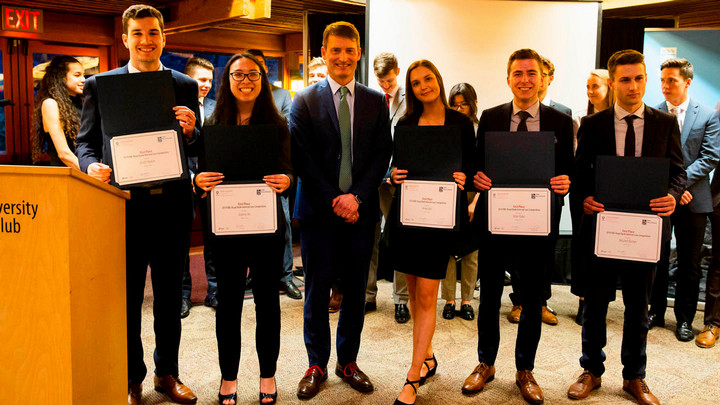
“In first place: team 58,” the judges announce. Excited shouts and a round of applause erupts from the audience. Their hard work has paid off! Each student is awarded $200 for their efforts, a certificate to hang on their wall, and immense bragging rights. Their ability to work as a team, while playing to individual strengths, allowed them to create a comprehensive and detailed analysis that ultimately set them apart from the other finalists. They congratulate one another and look extremely proud of each one of their efforts, and more importantly, how well they worked as a team.
Photos: UVic Photo Services; Mackenzie Ford

